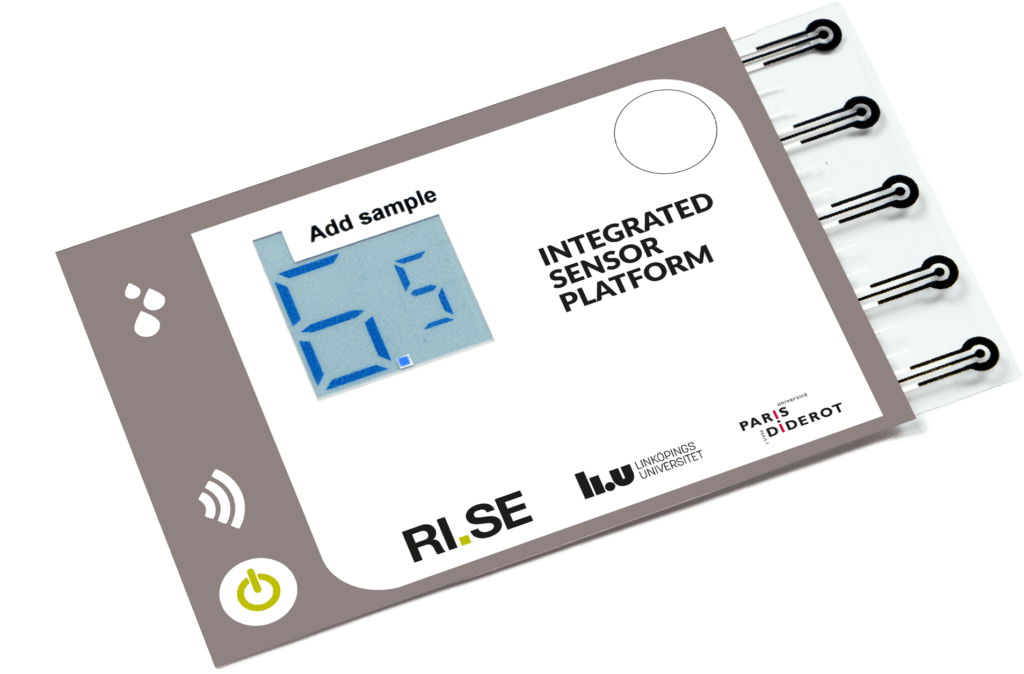Integrated Sensor Platform
A versatile miniature sensing system
A novel miniature lab – in the form of a smart card – which can sense biomarkers and interpret into electrical signals.
This sustainable proof of concept uses electrically conductive materials (”inks”) to print battery, sensor and several state-of-the-art, screen printed electrochromic displays, integrated with a silicon chip. The platform is a showcase of machineability – possible to produce in high-speed processes, to a low cost. The platform also illustrates PEA’s integration and assembly capacity, ranging from printed transistors and driver design to monolithic integration. Below we present different versions of the sensor platform for applications within Life Science (diagnostics and monitoring), for environmental purposes and for the construction business.
- Biosensors
- UV
- Humidity -for instance passive sensors in RISE Acreo spinoff Invisense.
- Smart Temperature Label (sCCI)
- GreenSense
The unique all-printed biosensor concept presents a new paradigm in inexpensive biosensing devices. The integrated biosensor shown above is an entire system including power source, sensor and display all printed on a sheet of flexible plastic or paper. The sensor used today in the integrated bio demonstrator is a glucose sensor to demonstrate the possibilities of the platform. The concept can be utilized for other sensor analytes and mechanisms, including enzymatic (biological recognition and detection) or affinity with microfluidics, provided there is an electrochemical transduction mechanism. The platform is versatile and adaptable to specific user needs and applications, including adding communication technology.

After many years of extensive R & D, within the field of Printed Electronics, done by RISE and Linköping University – a generic printed technology platform has been developed. This sustainable proof of concept uses electrically conductive materials (“inks”) to print battery, sensor and several state-of-the-art, screen printed RISE ECD (Acreo Display), integrated with a silicon chip. The platform is a showcase of machineability – possible to produce in high-speed processes, to a low cost. The platform also illustrates PEA’s integration and assembly capacity, ranging from printed transistors and driver design to monolithic integration.
To create the generic sensor platform RISE uses electrically conductive materials (“inks”) to print battery, sensor and displays which are integrated with a silicon chip. Depending on what should be detected by the sensor – glucose, bacteria, UV-radiation etc. – we use different types of “sensor inks”.
